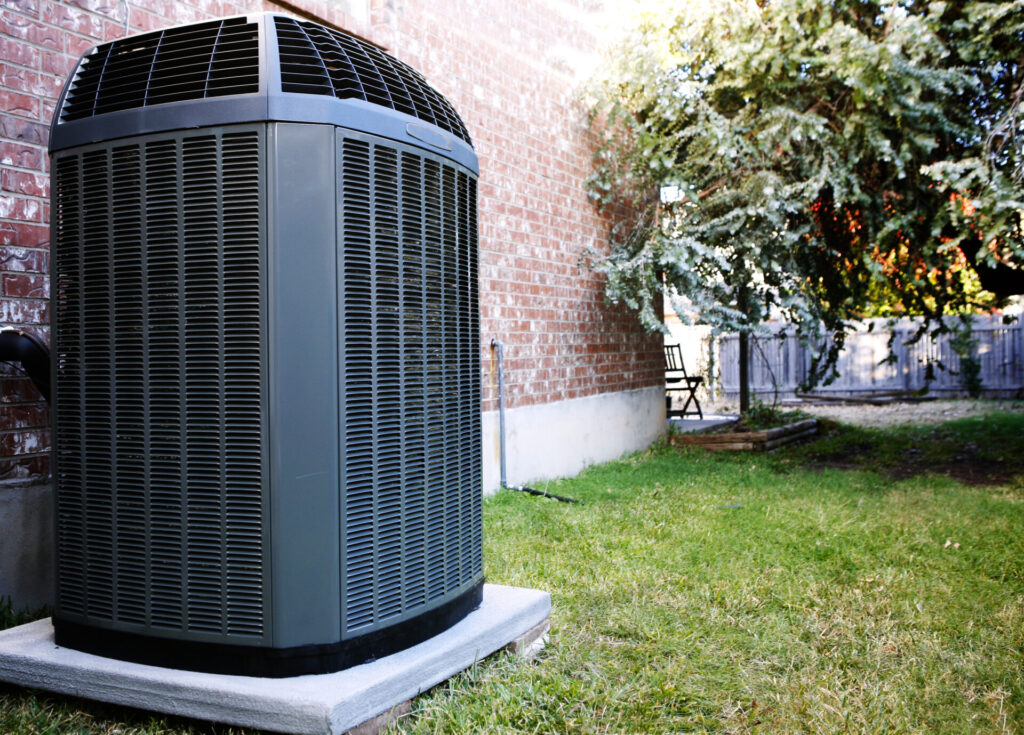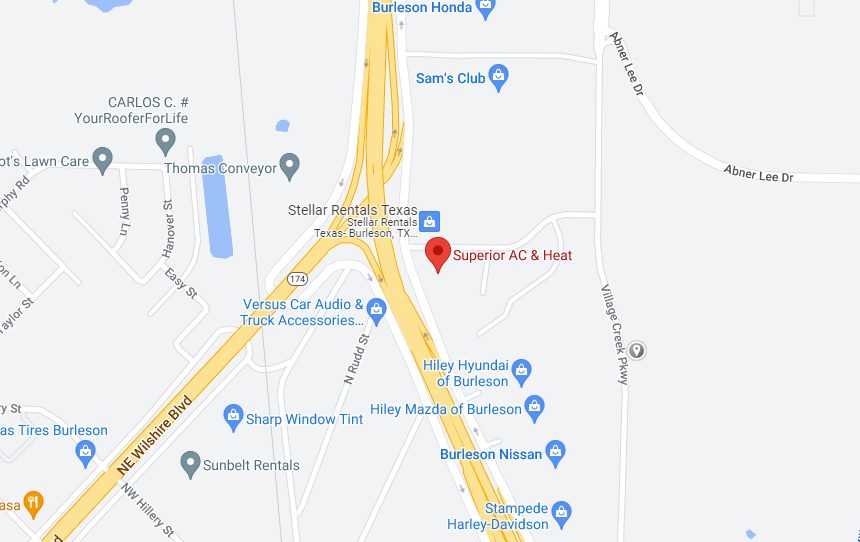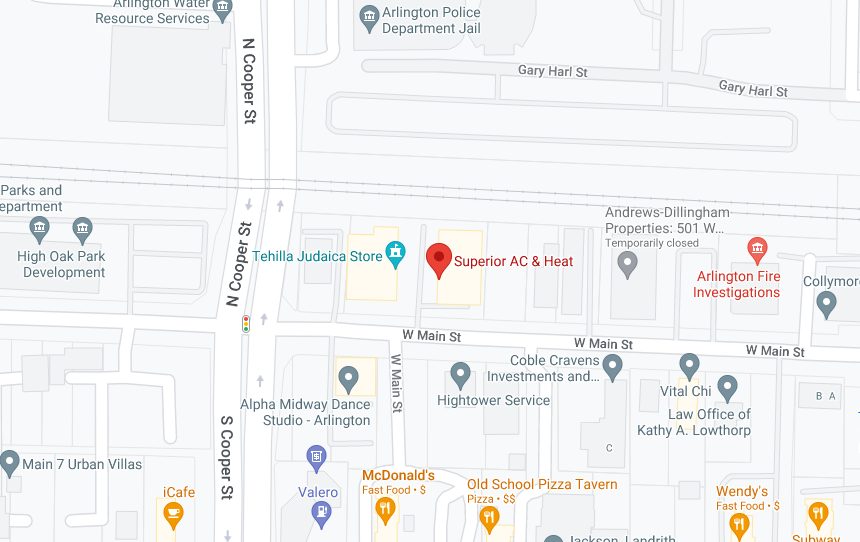If you’re upgrading the comfort of an older home, choosing between ducted and ductless AC systems is one of the biggest decisions you’ll face. The age, layout, and existing infrastructure of your home all play a role in which solution is better. At Superior AC & Heat, we help homeowners in Burleson, Arlington, and surrounding areas find the most effective, affordable cooling option for their home—no guesswork, no pushy sales, just smart solutions that work.
Older homes come with charm, history, and solid construction—but they often weren’t built with central air conditioning in mind. This creates unique challenges when it’s time to add or replace a cooling system. The two main options are ducted central air systems and ductless mini-split systems. Each has advantages and trade-offs depending on the layout of your home and your cooling goals.
Ducted Systems: Centralized Cooling with a Familiar Setup
For many homeowners, a traditional ducted system feels like the go-to option. These systems use a central air conditioner, typically placed outside the home, which cools air and distributes it through a network of ducts and vents. If your older home already has ductwork in place from a previous system or for heating, you may be able to retrofit a new AC unit into that framework with minimal changes.
That said, many older homes either lack ductwork or have ducts that weren’t designed with modern cooling in mind. In these cases, installing or upgrading a duct system can be costly and invasive—especially if your walls, ceilings, or floors weren’t built to accommodate it.
Ducted systems still offer powerful, even cooling and a centralized control system, which is great for homeowners who prefer traditional thermostats and uniform temperature throughout the house. They’re also quieter indoors since the main components are located outside and in utility areas.

Ductless Mini-Split Systems: Flexible Cooling Without the Disruption
Ductless systems, also known as mini-splits, offer a highly flexible and efficient alternative. These systems use one or more indoor air handlers connected to an outdoor compressor through small refrigerant lines. Because they don’t rely on ducts, there’s no need to tear into walls, ceilings, or floors—making them a smart option for homes with limited space or architectural details you don’t want to disturb.
Each indoor unit cools a specific zone, such as a bedroom or living room, giving you complete control over which areas are cooled and when. This zoned control often leads to lower energy bills, since you’re not cooling unused parts of the house.
Mini-splits are compact, quiet, and modern-looking. They mount high on the wall or ceiling and operate at low volume. And since there are no ducts, there’s no energy loss from leaks, which are common in older or poorly sealed duct systems.
What to Consider Before Installing Any AC System in an Older Home
Older homes offer unique character and craftsmanship, but those same features can present challenges when it comes to modern HVAC installations. Before you commit to a ducted or ductless system, it helps to think through a few practical factors that may affect your choice and the installation process.
Here’s what homeowners should consider:
- Insulation and Air Sealing: Many older homes lack modern insulation, which can make even the best AC system work harder. Upgrading insulation can improve performance and reduce system size requirements.
- Electrical Capacity: Older homes may need an electrical upgrade to support the demands of a new AC system—especially ductless setups with multiple zones.
- Room-by-Room Comfort Needs: Mini-splits allow for different temperatures in different rooms, which can be perfect for homes where certain spaces are used more often.
- Aesthetic Preferences: Some homeowners prefer the look of concealed ductwork over visible wall-mounted mini-split units, while others prioritize function and efficiency over aesthetics.
- Long-Term Efficiency Goals: If lowering your utility bills is a priority, ductless systems often win in terms of energy savings—especially in homes without efficient ductwork.
- Preserving Architectural Integrity: If your home has original features, intricate molding, or plaster walls, a ductless system can offer a non-invasive alternative to protect its historic character.
A Quick Look at Pros and Cons
If you’re still weighing your options, here’s a quick side-by-side overview of ducted vs. ductless systems:
| Feature | Ducted System | Ductless Mini-Split |
|---|---|---|
| Installation | Invasive if no ducts exist | Minimal construction needed |
| Room-by-Room Control | Single thermostat controls all zones | Independent control for each room/zone |
| Visual Impact | Vents in ceiling or floors | Wall- or ceiling-mounted indoor units |
| Energy Efficiency | Can lose energy through duct leaks | High efficiency, no duct losses |
| Noise Level | Quiet indoor operation | Very quiet, especially in newer models |
| Cost of Installation | Lower if ductwork is already present | Higher upfront but often offset by savings |
| Best For | Whole-home, even cooling | Zoned cooling, flexible placement |
Which One Is Right for Your Older Home?
Choosing between ducted and ductless comes down to your home’s layout, your comfort preferences, and your budget. If your home already has solid ductwork, a new central AC unit may be the simplest path. But if adding ducts means cutting into walls, dealing with asbestos insulation, or altering the structure, a ductless mini-split system could save you time, money, and stress.
Some homeowners even use a combination of both systems—retaining existing ductwork for part of the house and installing ductless units in areas that are hard to reach or always too hot.
To decide what’s best, consider the following:
- Does your home already have ducts?
- Do you want to control temperatures in specific rooms separately?
- Are there areas where ductwork would be too invasive to install?
- Do you prefer a traditional setup or something more modern and efficient?
Why This Decision Matters for Efficiency and Cost
The right AC system does more than just keep you cool—it affects your energy use, comfort, and long-term maintenance. Ductless systems are generally more efficient due to the lack of air loss, especially in older homes with uninsulated or leaking ducts. That can mean significant savings on monthly energy bills.
Central systems, however, often have lower upfront costs if ductwork is already in place, and they may be easier to maintain for homeowners used to traditional HVAC setups.
No matter which option you’re considering, choosing the right system can reduce future repair costs, avoid inconsistent cooling, and make your home more comfortable year-round.
Let’s Talk About the Best Fit for Your Home
If you’re in Burleson, Arlington, or anywhere in between, the team at Superior AC & Heat is here to help you make the best choice for your older home. We’ve installed both ducted and ductless systems in historic homes, renovations, and everything in between.
We’ll come out, assess your home’s layout, talk with you about your goals, and give you a clear, honest recommendation about what makes the most sense for your comfort, space, and budget. No pressure. Just experienced insight and service that’s built around you.
Contact us today to schedule a consultation and learn more about ducted vs. ductless AC installation options. We’ll help you keep your older home cool, comfortable, and ready for the next Texas heatwave.




